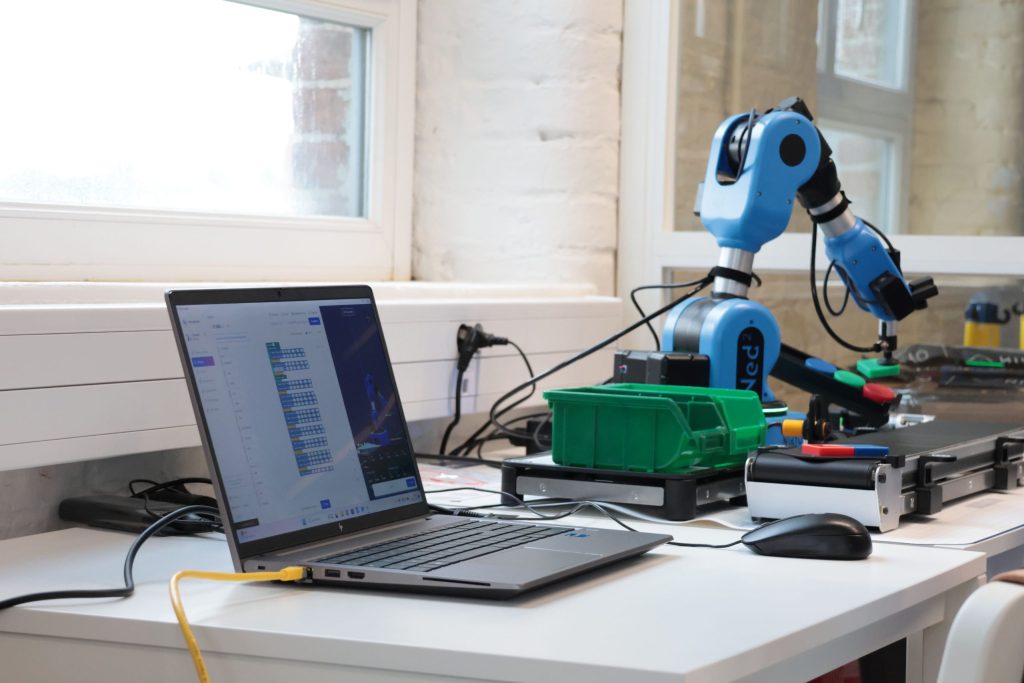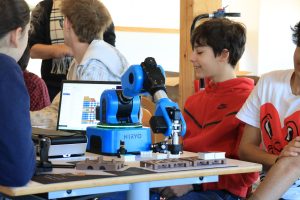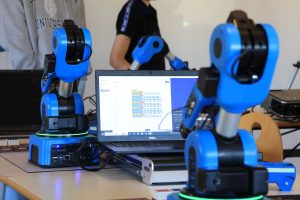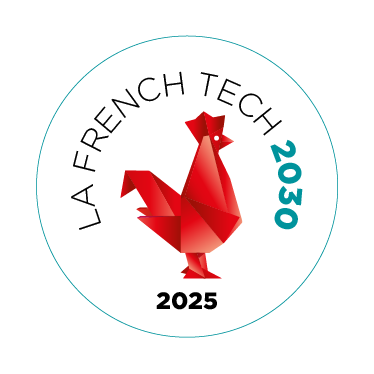Blockly for the youngest, Python for intermediate students, ROS for the most advanced: adapting programming languages to each school level is essential in educational robotics. This pedagogical progression allows students to develop computational thinking, creativity, and digital skills, effectively preparing them for technological careers and the challenges of artificial intelligence.
In 2023, nearly 85% of jobs require advanced digital skills according to an OECD study, highlighting the crucial importance of adapting education to this technological reality. Faced with this observation, the integration of educational robotics into school curricula becomes a major strategic issue to effectively prepare students for the professional challenges of tomorrow.
To ensure a gradual and adapted skill development, it is essential to carefully select programming languages according to the school level. From the intuitiveness of Blockly for younger children, through the versatility of Python for middle and high school students, to the complex environment of ROS intended for advanced students, this pedagogical gradation allows institutions to offer consistent, interactive training aligned with the future needs of the labor market.
What is robotics education and why is it essential?
Robotics education is an innovative teaching approach focused on learning through designing, building, and programming robots. It aims to develop key skills for today’s and tomorrow’s digital society.
Objectives
This educational discipline aims to stimulate logical and algorithmic thinking, innovation, and creativity. It promotes cooperation during projects. By introducing science, technology, engineering, and mathematics (STEM), it prepares young people for tomorrow’s jobs, particularly those related to artificial intelligence.
Concrete benefits in educational settings
In class or at school, robotics makes learning interactive and fun. It makes abstract concepts tangible and encourages experimentation. This educational tool develops perseverance, self-confidence and offers a means of differentiation for teachers and students. In short, it is a wonderful educational tool.
Overview of educational robotics tools and kits
The diversity of tools available for robotics education is immense, offering resources tailored to each cycle and school level. These kits and robots are designed to teach and develop digital and scientific skills.
Robots and kits for first steps
For children and young students, the tools prioritize intuitiveness. Offering a simple and visual educational platform, introductory robots like Bee-Bot and Cubetto facilitate access to early educational activities. Simple construction kits with robotic elements, such as some LEGO Education materials, introduce play and hands-on manipulation.
Evolving platforms for middle school
In middle school, platforms like Thymio and Edison offer more advanced block-based programming. They introduce concepts of sensors and actuators, allowing for more complex projects to be carried out. Modular kits, such as Makeblock, encourage building and customizing robots. Learning then becomes more structured.
Systems for high school and beyond
For high school and higher education, systems such as Arduino or Micro:bit (with extensions) require text-based programming. Robots based on Raspberry Pi explore more advanced technologies, potentially including artificial intelligence basics.
Teaching covers embedded systems and communication, preparing students for technological challenges in society. These educational tools prepare them for tomorrow’s jobs and collaborative team projects. They are valuable resources for teachers and digital education stakeholders.
Adapting programming languages to each school level
Learning robotics in education follows a progressive approach tailored to age and skill level. It is about providing the right tools to learn to program a robot or kit. This pedagogical approach enables young people to develop their digital and scientific skills, a major asset in today’s society, especially related to artificial intelligence.
Blockly: intuitive blocks to start
Ideal for kindergarten and early primary children, Blockly is a visual programming language. Thanks to drag-and-drop blocks, syntax errors are eliminated! Students directly visualize the logic. They can carry out simple activities: move a robot forward, make it react to a sensor. It is an excellent tool to understand sequences and basic conditions.
Python: a powerful and accessible language to progress
In middle and high school, Python takes over. Its clear syntax facilitates the transition from blocks. Versatile, this language allows programming more complex behaviors, managing advanced sensors or communication. It is possible to gradually move from Blockly to Python on certain educational platforms. It opens the door to many more ambitious projects.
ROS (Robot Operating System): the professional environment for experts
More than just a programming language, ROS is a complete software system, a suite of tools designed to simplify the development of complex programmable robots. Intended for experienced high school students and higher education, it allows coordinating multiple sensors, autonomous navigation, or manipulation. It is often used with Python or C++, preparing students for the professional challenges of the robotics world.
Concrete examples of robotics applications in class
The integration of robotics in education offers innovative teaching tools for young people. In the service of education, the robot becomes a valuable tool in class, serving as a medium for learning and programming while developing essential digital skills.
Inspiring cross-disciplinary projects
In class, various interdisciplinary projects are possible. In science, robots can simulate phenomena. In mathematics, programming helps visualize shapes. Technology allows designing the robot itself. These activities promote learning through a school project.
Educational organization and challenges
Pedagogical organization requires equipment management and teamwork. On the other hand, the main difficulties lie in the acquisition cost of kits and teachers preparation. However, resources and training are available to support school stakeholders in this educational approach, preparing students for tomorrow’s digital technologies.

















